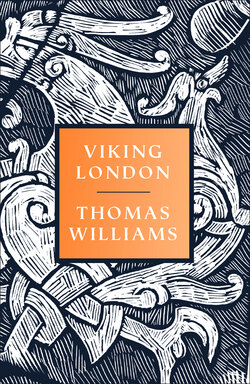Читать книгу Viking London - Thomas Williams - Страница 9
Introduction
ОглавлениеWherever their ships ploughed the water, the Vikings made needles of rivers: a hypodermic rush of systemic devastation and steroidal vigour, wracking the veins of nations with the germ of change. In Dublin, York and Kiev, Iceland, Normandy and Russia, the Vikings planted the seeds of new realms and great cities, stoking the furnaces of trade, technology and industry wherever their keels ground the shingle and markets echoed with the jangle of slave-chains. They remoulded the world for ever, violence and commerce riding the whale-road from the north: twin sea-stallions of the Viking Age. In Britain the impact was profound: the Vikings remade the geopolitical map, changed the language, up-ended the dynamics of power and trade. Monasteries and settlements burned, ancient dynasties were extinguished. And nowhere in these islands was subjected to more aggression than London.
Between 842 and 1016 London was assaulted by Vikings on at least a dozen separate occasions. Sometimes it burned and sometimes it surrendered, mostly it stood firm when all others had given up hope; and throughout it all the city endured, remaking and remodelling itself, growing strong in adversity, unique in economic power, a crucible of cultures, enterprise and political intrigue: a maker of kings, the heart of a North Sea empire. This book is a sketch of London in the Viking Age, how it remade itself, how it was transformed by immigrants and natives, kings and commoners into the fulcrum of national power and identity. London emerged as a hub of trade, production and international exchange, a financial centre, a political prize, a fiercely independent and often intractable cauldron of spirited and rowdy townsfolk: a place that, a thousand years ago, already embodied much of what London was to become and still remains.
This book is also, however, a confrontation with the city that still sprawls beside the Thames – a delving into its darkest age, an invasion of its privy parts.
Viking Age London is like an old wound, seemingly long healed and oft forgotten. But sometimes in the winter, when a cold wind blows from the north, it still nags – an ache that will never go away. Stumbling around corners, feet catch on stitches, pull back the skin of modernity – an ancient street name hidden beneath a concrete underpass, a paved void where a church no longer stands, a stretch of the old riverbank crawling out from beneath embankments. For nothing is lost in the city: things just sink further into the mire, deeper into time.
Occasionally, however, those memories break free, bursting upward like the hands of hungry corpses, or shimmering wraith-like through the alluvium. They hover like a miasma in the crypts of old churches or the depths of museum collections, drifting amongst beer cans at the blood-coloured foot of London Wall or blowing across the mud and shingle on the Thames foreshore. In these places the ghosts of Viking London still assemble, the murmur of liðsmen mingling with the banter of Victorian antiquarians, the chatter of tourists, the profanities of drunks. London is a city of spectres, of ghosts walking in the footsteps of other ghosts, and the Viking Age is perhaps its most forgotten hinterland.
And through it all runs the river, that titanic, oily-backed serpent. It winds its monstrous coils through Viking London – through time and place, providing and devouring, poisoning and fattening – before unravelling, unbound, into a mess of estuarine chaos, its mighty body dissolving to the sea.
